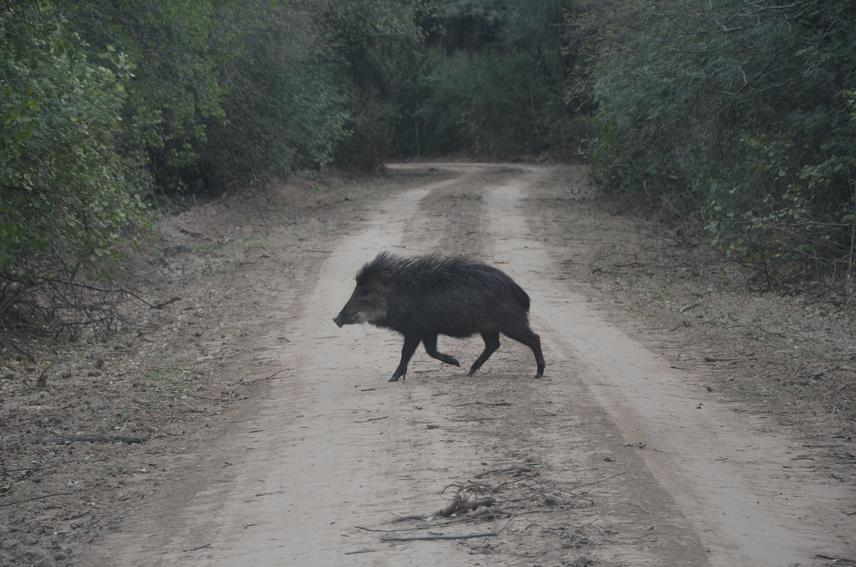Carolina Jankowicz
This project addresses an information gap identified by the National Parks Administration, the Ministry of the Environment and the National Scientific and Technical Research Council of Argentina. Its goal is to determine how to promote connectivity among white-lipped peccary populations in the Argentine Atlantic Forest (AAF) Green Corridor.

White-lipped peccary crossing the road. © Carolina Jankowicz.
The white-lipped peccary is primarily threatened by intense hunting pressure and deforestation. As a result, the species is confined to remaining habitat patches with low anthropogenic impact. Moreover, its populations across the Americas appear to experience sudden declines. Several cases have been documented where the species has vanished from areas where it was once common, sometimes reappearing decades later (Fragoso et al., 2022). Although the main drivers behind this phenomenon remain unclear, the authors suggest that connectivity between the affected populations and other populations is crucial for their recovery. Observations by local experts suggest that this phenomenon has occurred in the AAF, where the species disappeared for nearly 20 years and has only recently reappeared.
This project seeks to answer: Which areas should be prioritised to enhance connectivity among white-lipped peccary populations in the AAF Green Corridor? To address this, we will analyse both the species' habitat use and genetic connectivity among populations to determine where they move and whether this translates into gene flow, thereby ensuring functional connectivity. This work is being carried out in collaboration with a range of stakeholders, including decision-makers, park rangers and local communities. By integrating local knowledge and the insights of managers regarding logistical and socio-political factors, we aim to identify key areas for conservation efforts and resource allocation.